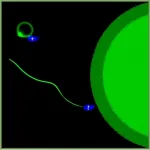(Press-News.org) When we think about the links to the future - the global transition to solar and wind energy, tactile virtual reality or synthetic neurons - there's no shortage of big ideas. It's the materials to execute the big ideas - the ability to manufacture the lithium-ion batteries, opto-electronics and hydrogen fuel cells - that stand between concept and reality.
Enter two-dimensional materials, the latest step in innovation. Consisting of a single layer of atoms, two-dimensional materials like graphene and phosphorene exhibit new properties with far-reaching potential. With a capability to be combined like Lego bricks, these materials offer connections to future products, including new means to convey both power and people, with more-efficient energy transmission, and solar- and wind-powered vehicles on roads and in skies.
A study led by University of Georgia researchers announces the successful use of a new nanoimaging technique that will allow researchers to test and identify these materials in a comprehensive way at the nanoscale for the first time. Now, there's a way to experiment with new materials for our big ideas at a really, really small scale.
"Fundamental science - small-scale electrical conductivity, light emission, structural changes - happen at the nanoscale," said Yohannes Abate, Susan Dasher and Charles Dasher MD Professor of Physics in the Franklin College of Arts and Sciences and lead author on the new paper. "This new tool allows us to visualize all of this combined at unprecedented specificity and resolution."
"Since we cannot see atoms with traditional methods, we needed to invent new tools to visualize them," he said. The hyperspectral imaging technique allows scientists to inspect electrical properties, optical properties, and the mechanical properties at the fundamental length scale, simultaneously.
The hyperspectral imaging research is supported by grants from the United States Air Force and the National Science Foundation. The researchers created a one-atom thick sheet of two kinds of semiconductors stitched together, similar to assembling an atomic Lego, with properties not found in traditional thick materials. With single-atom-thick crystals, each atom is literally exposed on the surface, combining atomic properties that result in new properties.
"At the heart of materials science is the need to understand fundamental properties of new materials, otherwise it is impossible to take advantage of their unique properties," Abate said. "This technique puts us one step closer to being able to use these materials for a number of potential applications."
Those include various forms of electronics or light-emitting systems applications. How to verify the effect of very small changes in atomic composition, conductivity and light response of single-atom-thick materials simultaneously has been the challenge until now, Abate said.
Nobel Prize-winning physicist Richard Feynman, who envisioned nanotechnology as early as the 1960s, predicted that as scientists became able to choose and replace certain kinds of atoms, they would able to fabricate practically any imaginable material.
"More than half a century later, we're not there yet, but where we are, we can visualize them, and at that scale there are new issues that can arise and we have to understand those properties as a part of understanding the large scale material properties, before we can use them," Abate said.
INFORMATION:
CLEVELAND--Researchers at Case Western Reserve University, using artificial intelligence (AI) to analyze simple tissue scans, say they have discovered biomarkers that could tell doctors which lung cancer patients might actually get worse from immunotherapy.
Until recently, researchers and oncologists had placed these lung cancer patients into two broad categories: those who would benefit from immunotherapy, and those who likely would not.
But a third category--patients called hyper-progressors who would actually be harmed by immunotherapy, including a shortened lifespan after treatment--has begun ...
PITTSBURGH, Feb. 4, 2021 - Researchers at UPMC Hillman Cancer Center and the National Cancer Institute (NCI) demonstrate that changing the gut microbiome can transform patients with advanced melanoma who never responded to immunotherapy--which has a failure rate of 40% for this type of cancer--into patients who do.
The results of this proof-of-principle phase II clinical trial were published online today in Science. In this study, a team of researchers from UPMC Hillman administered fecal microbiota transplants (FMT) and anti-PD-1 immunotherapy to melanoma patients ...
Despite living in the same part of the Mojave Desert, and experiencing similar conditions, mammals and birds native to this region experienced fundamentally different exposures to climate warming over the last 100 years, a new study shows; small mammal communities there remained much more stable than birds, in the face of local climate change, it reports. The study presents an integrative approach to understanding the climate vulnerability of biodiversity in rapidly warming regions. Exposure to rising temperature extremes threatens species worldwide. It is expected to push many ever closer toward extinction. Thus, understanding ...
The soundscapes of the Anthropocene ocean are fundamentally different from those of pre-industrial times, becoming more and more a raucous cacophony as the noise from human activity has grown louder and more prevalent. In a Review, Carlos Duarte and colleagues show how the rapidly changing soundscape of modern oceans impacts marine life worldwide. According to the authors, mitigating these impacts is key to achieving a healthier ocean. From the plangent songs of cetaceans to grinding arctic sea ice, the world's oceans' natural chorus is performed by a vast ensemble of geological (geophony) and biological (biophony) sounds. However, for more than a century, ...
In February 2001, the first drafts of the human genome were published. In this Special Issue of Science, "Human Genome at 20," an Editorial, a Policy Forum, a series of NextGen Voices Letters and a Perspective explore the complicated legacy of the Human Genome Project (HGP). "Millions of people today have access to their personal genomic information, with direct-to-consumer services and integration with other 'big-data' increasingly commoditizing what was rightly celebrated as a singular achievement in February 2001," writes Science Senior Editor Brad Wible.
An Editorial by Claire Frasier, director of the Institute for Genome Sciences at the University ...
Iodine plays a bigger role than thought in rapid new particle formation (NPF) in relatively pristine regions of the atmosphere, such as along marine coasts, in the Arctic boundary layer or in the upper free troposphere, according to a new study. The authors say their measurements indicate that iodine oxoacid particle formation can compete with sulfuric acid - another vapor that can form new particles under atmospheric conditions - in pristine atmospheric regions. Tiny particles suspended high in the atmosphere - aerosols - play an essential role in Earth's climate system. Clouds require airborne particles, or cloud condensation nuclei (CCN), ...
For patients with cancers that do not respond to immunotherapy drugs, adjusting the composition of microorganisms in the intestines--known as the gut microbiome--through the use of stool, or fecal, transplants may help some of these individuals respond to the immunotherapy drugs, a new study suggests. Researchers at the National Cancer Institute (NCI) Center for Cancer Research, part of the National Institutes of Health, conducted the study in collaboration with investigators from UPMC Hillman Cancer Center at the University of Pittsburgh.
In the study, some patients with advanced melanoma who initially did not respond to treatment with an immune checkpoint inhibitor, a type of immunotherapy, did respond to the drug after receiving a transplant ...
Competition among sperm cells is fierce - they all want to reach the egg cell first to fertilize it. A research team from Berlin now shows in mice that the ability of sperm to move progressively depends on the protein RAC1. Optimal amounts of active protein improve the competitiveness of individual sperm, whereas aberrant activity can cause male infertility.
It is literally a race for life when millions of sperm swim towards the egg cells to fertilize them. But does pure luck decide which sperm succeeds? As it turns out, there are differences in competitiveness between individual sperm. ...
Berkeley -- In the arid Mojave Desert, small burrowing mammals like the cactus mouse, the kangaroo rat and the white-tailed antelope squirrel are weathering the hotter, drier conditions triggered by climate change much better than their winged counterparts, finds a new study published today in Science.
Over the past century, climate change has continuously nudged the Mojave's searing summer temperatures ever higher, and the blazing heat has taken its toll on the desert's birds. Researchers have documented a collapse in the region's bird populations, likely resulting ...
Treatment for HIV has improved tremendously over the past 30 years; once a death sentence, the disease is now a manageable lifelong condition in many parts of the world. Life expectancy is about the same as that of individuals without HIV, though patients must adhere to a strict regimen of daily antiretroviral therapy, or the virus will come out of hiding and reactivate. Antiretroviral therapy prevents existing virus from replicating, but it can't eliminate the infection. Many ongoing clinical trials are investigating possible ways to clear HIV infection.
In a study published Feb. 4 in the journal Science, researchers at Washington University School of Medicine in St. Louis have identified a potential way to eradicate ...

